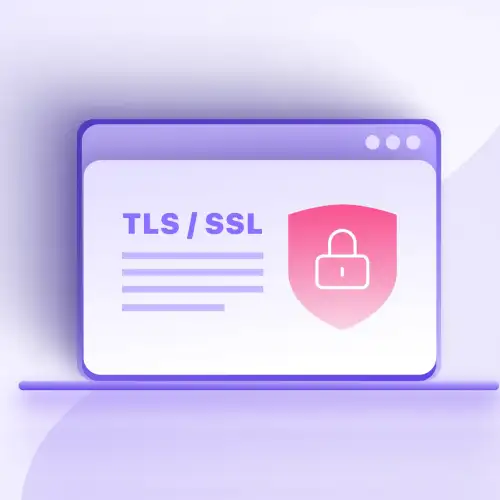In today’s digital age, the security and privacy of online communication are paramount. As businesses, individuals, and governments increasingly rely on the Internet for transactions, communication, and data storage, ensuring this information is secure from interception and tampering has become critical. One of the foundational technologies that help secure online communication is the SSL/TLS certificate. This article explores what SSL/TLS certificates are, how they work, and why they are essential for anyone using the internet.
Understanding SSL/TLS Certificates
SSL (Secure Sockets Layer) and TLS (Transport Layer Security) are cryptographic protocols designed to provide secure communication over a computer network. While SSL was the original protocol, it has been succeeded by TLS, which is more secure and efficient. However, the term SSL is still commonly used to refer to both protocols.

An SSL/TLS certificate is a digital certificate that authenticates the identity of a website and enables an encrypted connection. It is issued by a Certificate Authority (CA), a trusted third-party organization that verifies the credentials of the certificate requester before issuing the certificate.
Components of an SSL/TLS Certificate
- Public Key: Used to encrypt data that can only be decrypted by the corresponding private key.
- Private Key: Kept secret by the server and used to decrypt data encrypted with the public key.
- Certificate Authority (CA) Signature: The CA’s digital signature vouches for the authenticity of the certificate.
- Subject: The owner of the certificate, usually the domain name of the website.
- Validity Period: The dates between which the certificate is valid.
- Serial Number: A unique identifier assigned by the CA.
How SSL/TLS Certificates Work
The primary function of an SSL/TLS certificate is to establish a secure encrypted connection between a web server and a web browser. Here’s a step-by-step overview of how this process works:
- SSL/TLS Handshake: When a browser connects to a secure website, an SSL/TLS handshake is initiated. This handshake involves the following steps:
- The browser requests the server to identify itself.
- The server sends a copy of its SSL/TLS certificate to the browser.
- The browser checks the certificate against a list of trusted CAs and verifies its validity and authenticity.
- If the certificate is trusted, the browser generates a session key, encrypts it with the server’s public key, and sends it back to the server.
- The server decrypts the session key with its private key.
- Both the browser and the server now have the session key, which is used to encrypt all further communication during the session.
- Encrypted Communication: Once the handshake is complete, the browser and server use the session key to encrypt and decrypt data, ensuring that the information exchanged remains confidential and secure from eavesdroppers.
Types of SSL/TLS Certificates
SSL/TLS certificates come in various types, each suited to different needs and levels of validation:
- Domain Validated (DV) Certificates: These are the most basic types of SSL/TLS certificates. The CA only verifies that the applicant has control over the domain. They are quick to issue and typically used for smaller websites and blogs.
- Organization Validated (OV) Certificates: These certificates provide a higher level of security. The CA verifies the organization’s identity and physical location in addition to domain control. OV certificates are often used by businesses and non-profits.
- Extended Validation (EV) Certificates: EV certificates offer the highest level of validation. The CA conducts a rigorous vetting process to verify the legal, physical, and operational existence of the organization. Websites using EV certificates display a green address bar or a padlock icon in the browser, signaling a high level of trust to users.
- Wildcard Certificates: These certificates secure a single domain and all its subdomains (e.g., *.example.com). They are convenient for organizations with multiple subdomains.
- Multi-Domain (SAN) Certificates: Subject Alternative Name (SAN) certificates allow multiple domains to be secured with a single certificate, making them ideal for companies managing several websites.
Why SSL/TLS Certificates are Essential
The importance of SSL/TLS certificates extends beyond merely enabling encryption. Here are some critical reasons why SSL/TLS certificates are necessary:
- Data Protection: The primary purpose of SSL/TLS certificates is to encrypt data transmitted between a web server and a client, protecting it from interception by malicious actors. This encryption ensures that sensitive information, such as credit card numbers, login credentials, and personal data, remains confidential.
- Authentication: SSL/TLS certificates authenticate the identity of a website, ensuring users that they are communicating with the legitimate site and not an impostor. This helps prevent phishing attacks and man-in-the-middle attacks, where attackers could intercept and alter communication between the user and the server.
- Trust and Credibility: Displaying an SSL/TLS certificate and the accompanying padlock icon in the browser’s address bar signals to users that the website is secure and trustworthy. This trust is crucial for e-commerce sites and any online service that requires users to input personal or financial information.
- SEO Benefits: Search engines like Google give preference to secure websites in their search rankings. Websites with SSL/TLS certificates are more likely to rank higher than those without, improving visibility and attracting more visitors.
- Compliance: Many regulations and standards, such as the General Data Protection Regulation (GDPR) in Europe and the Payment Card Industry Data Security Standard (PCI DSS), require the use of encryption to protect sensitive data. SSL/TLS certificates help organizations comply with these legal requirements.
- Browser Warnings: Modern web browsers display warnings to users when they attempt to access a website that does not have a valid SSL/TLS certificate. These warnings can deter users from visiting the site, leading to a loss of traffic and potential business. Having a valid certificate helps avoid these warnings and provides a seamless browsing experience.
Conclusion
In conclusion, SSL/TLS certificates are an essential component of secure online communication. They protect sensitive data, authenticate the identity of websites, build trust with users, improve search engine rankings, ensure regulatory compliance, and prevent browser warnings. Whether you are running a personal blog, an e-commerce site, or a large enterprise platform, having an SSL/TLS certificate is not just a best practice but a necessity in today’s digital landscape.
Investing in the right SSL/TLS certificate for your needs is a small price to pay for the significant benefits it provides in terms of security, trust, and credibility. As the internet continues to evolve and cyber threats become more sophisticated, the role of SSL/TLS certificates in safeguarding online communication will only become more critical.
Protect your website and build unwavering trust with LadiTech’s SSL/TLS certificates. Our cutting-edge encryption technology ensures that your data remains secure from cyber threats, providing peace of mind for you and your customers. With LadiTech, you not only enhance your site’s security but also boost its credibility and search engine rankings. Choose LadiTech for reliable, top-tier SSL/TLS certificates and take your online security to the next level. For more information about Cybersecurity services contact us.









